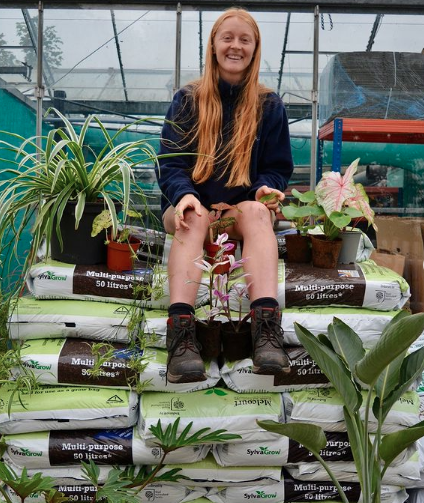Grown not flown: The problem with importing house plants.
Our appetite for house plants continues to be on the rise. A 2019 survey by the RHS found that nearly three quarters (72%) of adults owned a houseplant — a figure that rose to 80% amongst 16 to 24 year-olds. These statistics are likely to have grown further thanks to the pandemic.
It seems that younger people have been driving the trend and while sales have risen across all plant categories, foliage houseplants have seen the most significant growth. Many of the house plants we have grown to love as a nation are not native to the UK. The ever popular Monstera deliciosa is native to Mexico. Our best seller, Oxalis triangularis, is native to Brazil and Pilea peperomioides also known as the Chinese money plant is native to the Yunnan and Sichuan provinces in southern China. The rise of social media has certainly helped to boost the market and we have all seen the rise of insta-perfect jungles and Pinterest interiors flooded with greenery. Whilst these are beautiful to look at, it has become a sustainability nightmare when you consider the origins of each plant within the carefully curated collection.
The reality, is that the majority of house plant and flower nurseries are in the Netherlands and further afield. The plants are grown on mass, usually in Holland and imported by boat so that while the house plant in question may have racked up 200+ miles before it reaches the UK, in terms of sustainability per plant it is actually quite low. Ethnobotanist James Wong argues that these large international deliveries actually have less of an environmental impact than small-scale deliveries from UK nurseries. He wrote in the Guardian: “If you are driving to your garden centre to buy houseplants, the emissions from your car will almost certainly be greater than the emissions generated in getting it from grower to garden centre. In fact, it is fair to say that in the production chain of houseplants, transport is one of the lowest sources of carbon emissions wherever you choose to source them from.”
This is not to make you as a consumer feel guilty for your plant habit. Of course by keeping plants you are already helping in the fight against climate change. It is true that we all need to be more aware of our personal actions but what Wong misses in this argument is that when we choose to import, we have less control over the growing practices. Using peat in horticulture is devastating to our planet. The Majority of growers still use peat and inorganic fertilisers and the consumer demand for peat free can lead to shady practices such as repotting plants in peat free for sale, rather than growing peat free instead. Harriet’s plants is a glasshouse in Staffordshire that grows indoor house plants for the UK market. It has been Harriet’s ambition from the start to grow from seed or propagate from mother plants reducing the need to import grown plants thus ensuring that they are 100% peat free. Growing from seed instead of importing has other benefits too as importing plants poses potential risks of introducing new pests and diseases. This method of growing also massively helps to reduce the carbon footprint of the business.
Thank you for reading, click here if you would like to know more about Peat and why you should use your consumer influence to make a positive difference to our planet.



